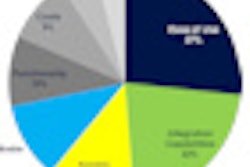Tuesday, November 30 | 3:00 p.m.-3:10 p.m. | SSJ14-01 | Room S402AB
In this scientific session, researchers from Siemens Healthcare of Malvern, PA, will share their results from using an automated image parser to link report and image content.The research group will discuss machine-learning algorithms that detect body landmarks, organs, and other important structures in 3D volumes. These structures can then be further analyzed by additional algorithms or by a radiologist who assigns "meaning" to the images by annotating them with common vocabulary from clinical ontologies, said presenter Martin Huber, PhD.
As a result, anatomical structures can be directly linked to their corresponding radiology report findings. This makes it possible to perform "intelligent" image searching and have speedy navigation of images and alignment with text documents, according to the researchers.
"Besides improved case retrieval/search and workflow improvements like the one presented in this abstract [direct linking of report and image content], we expect additional benefits in the future by making image content accessible for research and/or for clinical decision support and/or business intelligence applications," Huber said.




















